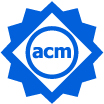Artifacts
Important dates
Artifact submission:
Artifact decision:
Camera-ready paper:
Conference:
Reproducibility chairs
- Grigori Fursin (cTuning foundation)
- Gennady Pekhimenko (University of Toronto)
Reproducibility committee members
- Xavier Bouthillier (University of Montreal)
- Ting-Wu Chin (CMU)
- Murali Emani (Argonne National Laboratory)
- Jessica Forde (Brown University)
- Grigori Fursin (cTuning foundation)
- Pierre Gronlier (OVH)
- Hervé Guillou (CodeReef & cTuning foundation)
- Erik Hemberg (MIT)
- Ahmet Inci (Carnegie Mellon University)
- Sagar Karandikar (UC Berkeley)
- Tanvir Ahmed Khan (University of Michigan)
- Asmita Pal (University of Wisconsin-Madison)
- Andrew Pelegris (UToronto)
- Shang Wang (University of Toronto)
- Yiwen Zhu (Microsoft)
Artifacts
The process
Following the successful introduction of the artifact evaluation process at MLSys'19 and the success of related initiatives at NeurIPS'19 and ASPLOS'20 (more than half of the accepted papers submitted artifacts for evaluation), we will continue the reproducibility initiative at the Conference on Machine Learning and Systems 2020.
The Conference on Machine Learning and Systems promotes reproducibility of experimental results and encourages code and data sharing to help the community quickly validate and compare alternative approaches. Authors of accepted papers are invited to formally describe supporting materials (code, data, models, workflows, results) using the standard Artifact Appendix template and submit it to the Artifact Evaluation process (AE).
Note that this submission is voluntary and will not influence the final decision regarding the papers. The point is to help authors validate experimental results from their accepted papers by an independent AE Committee in a collaborative way, and to help readers find articles with available, functional, and validated artifacts! For example, ACM Digital Library already allows one to find papers with available artifacts and reproducible results!
Artifact submission
You need to prepare your artifacts and appendix using the following guidelines. You can then submit your paper with the standard artifact appendix via the dedicated MLSys AE website before January 15, 2020. Your submission will be reviewed according to the following guidelines. Please, do not forget to describe the required hardware, software, data sets and models in your artifact abstract - this is essential to find appropriate evaluators! You can find the examples of Artifact Appendices in these MLSys'19 papers.
AE is run by a separate committee whose task is to assess how submitted artifacts support the work described in accepted papers based on the standard ACM Artifact Review and Badging policy.
Depending on evaluation results, camera-ready papers will include the artifact appendix and a set of ACM stamps of approval printed on their first page:
 |
artifact available |

| artifact evaluated (functional) |

| results replicated |
At the end of the process we will inform you about how to add these badges and the artifact appendix to your camera-ready paper.